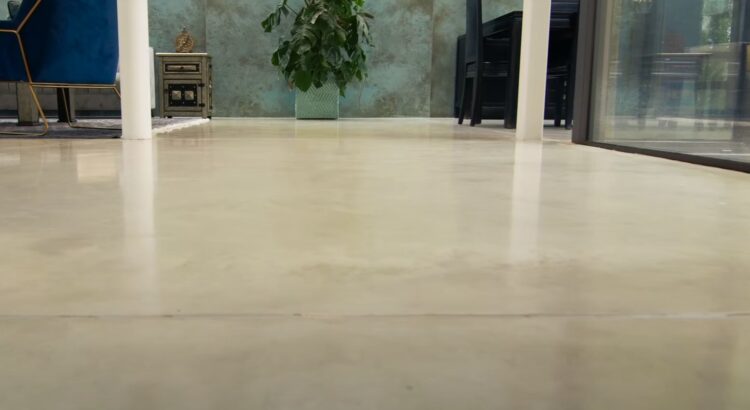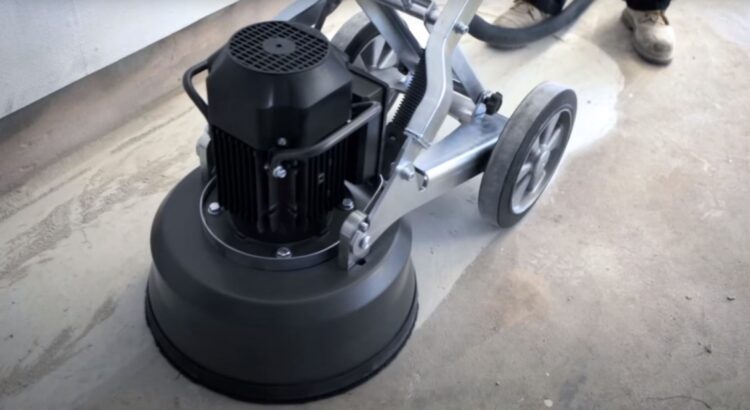Understanding Slip-Resistance in Flooring
When choosing a flooring option for an Auckland property, one primary concern for homeowners is slip-resistance. After all, nobody wants their home to be a hazard zone. Between stained and polished concrete, understanding which provides better slip resistance can greatly influence one’s choice.
Stained Concrete and Slip Resistance
Stained concrete achieves its finish through the application of acid- or water-based stains. The staining process can leave minute textures on the surface, offering a slight natural grip. Additionally, this texture means that even when wet, the surface can remain relatively non-slippery.
For those in regions like Waitakere, where frequent rain can make outdoor spaces damp, stained concrete can be a wise choice, ensuring safety even during wet conditions.
Polished Concrete: Shiny but Safe?
Polished concrete, renowned for its sleek appearance, is achieved by grinding the concrete surface and then polishing it using finer grits. The finish can be so refined that it mirrors a glossy appearance. While this might cause concerns about slipperiness, especially in wet conditions, many polished concretes are finished with a slip-resistant sealant.
However, for indoor applications, particularly in commercial spaces in suburbs like Manukau, the inherent slip-resistance of polished concrete is usually adequate.
Environmental and Sustainability Considerations
Stained concrete utilises chemicals in the staining process, which could have environmental implications. Polished concrete, on the other hand, uses mechanical grinding and polishing without any chemicals, making it a more environmentally friendly option.
Considering our duty to Auckland’s environment and sustainability, polished concrete has a slight edge due to its chemical-free finishing process.
Navigating Auckland’s Health and Safety Regulations
Both flooring types need to adhere to Auckland’s health and safety standards. These standards ensure that whether you’re in North Shore or Pukekohe, your floor is safe for residents and visitors alike. Polished concrete floors, due to their potential slipperiness when wet, might require more frequent maintenance checks, incurring additional costs.
Auckland Council Bylaws and the Impact on Seasoned Concrete
Auckland Council has specific bylaws that impact the type of seasoned concrete one can use. Certain suburbs, guided by their regional councils, have specific codes to ensure that construction materials and methods are in line with environmental and safety regulations. For instance, Rodney has strict codes about the materials to be used to ensure that they don’t disrupt the local ecology.
Acquiring the necessary consents for your flooring choice can come with costs. Being aware of these bylaws can save you from future penalties and ensure your flooring is compliant.
Costs and Types of Polished Concrete Flooring in Auckland
Polished concrete flooring can vary in price, depending on the finish and type:
- Basic Polished Concrete: Roughly $70 – $98 per square metre.
- Intermediate Polished Concrete: Approximately $98 – $126 per square metre, includes some grinding for a more refined finish.
- High-end Polished Concrete: Typically $126 – $168 per square metre, involves multiple grind levels and the finest finish.
Summary Table of Cost Breakdowns
| Type of Polished Concrete | Estimated Cost (per square metre) |
| Basic Polished Concrete | $70 – $98 |
| Intermediate Polished Concrete | $98 – $126 |
| High-end Polished Concrete | $126 – $168 |
To ensure you’re making the best choice for your property, both in terms of safety and aesthetics, consult with a professional. When considering polished or stained concrete for your Auckland home, reach out for expert advice and service.
Frequently Asked Questions
Which flooring option provides better slip-resistance: stained or polished concrete?
Stained concrete typically has a more textured surface due to the staining process, providing a natural grip and making it more slip-resistant, even when wet. Polished concrete, while having a sleek appearance, can be slippery, especially in wet conditions. However, many are finished with a slip-resistant sealant to enhance safety.
How does the staining process affect the slip-resistance of concrete?
Stained concrete achieves its finish through the application of acid- or water-based stains. This process leaves minute textures on the surface, offering a slight natural grip. The texture ensures that even when wet, the surface remains relatively non-slippery.
Are there environmental concerns associated with stained and polished concrete?
Stained concrete uses chemicals during the staining process, which can have environmental implications. Conversely, polished concrete undergoes a chemical-free process of mechanical grinding and polishing, making it a more environmentally friendly option.
How do Auckland’s health and safety regulations relate to these flooring types?
Both stained and polished concrete floors must adhere to Auckland’s health and safety standards. Polished concrete floors, due to their potential slipperiness when wet, might necessitate more regular maintenance checks. Ensuring adherence to these standards is crucial for the safety of residents and visitors.
What are the implications of Auckland Council Bylaws on seasoned concrete?
Auckland Council has specific bylaws influencing the type of seasoned concrete one can use. Some suburbs, under their regional councils, have distinct codes ensuring construction materials and methods align with environmental and safety regulations. Familiarity with these bylaws can prevent potential penalties and ensure flooring compliance.
How much does polished concrete flooring cost in Auckland?
The cost of polished concrete flooring varies based on the finish and type. Basic Polished Concrete costs around $70 – $98 per square metre, Intermediate Polished Concrete is approximately $98 – $126 per square metre, and High-end Polished Concrete typically ranges from $126 – $168 per square metre. Always consult with professionals for accurate pricing and to make the best choice for your property.
Key Takeaways
Slip-Resistance: Stained concrete offers better slip-resistance due to its textured surface from the staining process. Polished concrete can be made slip-resistant with appropriate sealants.
Environmental Impact: Polished concrete is more environmentally friendly as it undergoes a chemical-free grinding and polishing process. In contrast, stained concrete uses chemicals that might have environmental implications.
Auckland Regulations: Both stained and polished concrete need to adhere to Auckland’s health and safety standards. Familiarity with Auckland Council Bylaws is essential to ensure flooring compliance and avoid potential penalties.
Maintenance: Polished concrete might require more frequent maintenance checks, especially in wet conditions, due to its potential slipperiness.
Cost Implications: Polished concrete flooring prices in Auckland vary based on finish and type, ranging from $70 to $168 per square metre.
Professional Consultation: To ensure the best choice for safety, aesthetics, and compliance, it’s recommended to consult with professionals when considering flooring options for Auckland properties.

